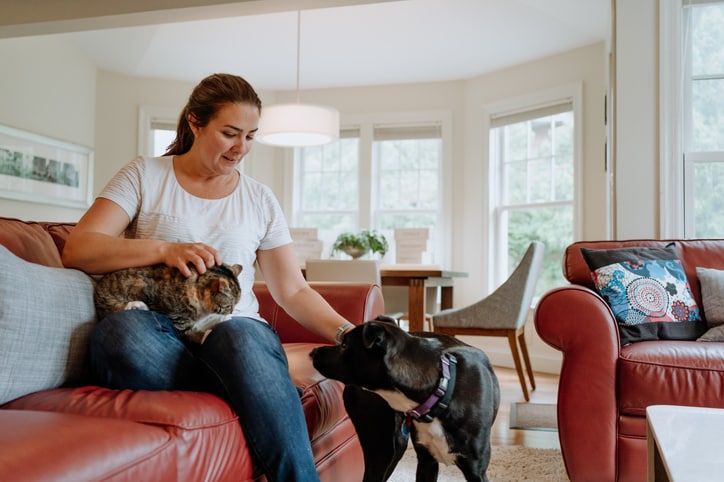What’s that weird patch on your dog’s head? Just a scratch, dry skin, or is it ringworm?
There are many misconceptions about ringworm in dogs, which is characterized by dry, itchy patches of skin commonly seen around a dog’s face, head and ears (although it can appear anywhere). “Ringworm is actually a fungus and only affects the skin,” says veterinarian Dr. Judy Morgan, author of “Needles to Natural: Learning Holistic Pet Healing.” It is seen most commonly in pets with compromised immune systems, mostly in young puppies and kittens, she explains.
Recognizing the condition takes approximately a week, according to Dr. Morgan. “Ringworm can mimic other skin problems in pets,” she explains. “Generally, it is a roundish, hairless, crusty lesion about the size of a dime. Generalized infection covering a larger part of the body is pretty rare.”
The condition, she says, can sometimes be diagnosed “by shining a black light on the hair shafts to see if they glow. Not all forms of ringworm glow. Usually diagnosis is by culture, which takes about a week to grow.” While ringworm in dogs may cause their owners stress, it’s relatively easy to treat, somewhat like athlete’s foot in humans.
What to Do
To recognize ringworm in dogs, pet owners should look for “patches of hair loss with itchy, flaky skin,” recommends veterinarian Dr. Laurie S. Coger, The Wholistic Vet blogger and author of “Vaccines Explained: The Wholistic Vet’s Guide to Vaccinating Your Dog.” Bottom line, though — if your dog has patches of hair loss, get your vet to check it out. “There may be some redness or secondary infection,” says Dr. Coger. “These lesions can also be signs of simple bacteria or yeast infection, mange, or other disease.”
“A black light exam can sometimes raise the index of suspicion for ringworm, but if there are many skin flakes it can be hard to interpret,” notes Dr. Coger. She recommends taking pictures every few days (cell phones are good for this!) to provide a visual record of any changes in the lesions.
“If you can, include a small ruler or coin to provide a scale reference,” she suggests. It’s important to notify your dog walker, groomer,and other individuals who may have been exposed to your animal to help stop the spread of ringworm, she also advises.
How to Treat
For mild cases, dogs can be given treatment at home and it’s noninvasive. If you elect to treat your dog at home, Dr. Morgan says, “over-the-counter human anti-fungal preparations (miconazole) applied topically two to three times daily will generally work to treat ringworm.” But if there’s no improvement or worsening of symptoms, “the pet should be seen by a veterinarian within a week” to have the dog’s skin and coat assessed, she advises.
Keeping your animal’s immune system healthy is important in preventing ringworm, notes Dr. Morgan. “In dogs with a healthy immune system, ringworm is not very common,” she says. “Many pet owners jump to the conclusion of ringworm when, in reality, the problem is an allergy or bacterial infection.”
Boosting your dog’s immune system to prevent diseases such as ringworm is fairly simple. Give them regular baths, avoid social isolation and ensure that your dog is getting a diet rich in antioxidants, such as beans, dog food and potatoes.
Similar to skin conditions in humans, stress can be a big factor in flare ups and the spread of disease. Ensure that your animal is given lots of attention and love, positive reinforcement and maintains an active lifestyle to function as optimally as possible. With all these aspects of health in alignment, conditions like ringworm can be kept at bay.
To learn how to help your dog with allergies, read about how to narrow down the cause.
Shannon Moyer-Szemenyei is the writer and owner of Sweet Stella’s. A long-time pet lover, she grew up with her beloved dalmatian, Tony, and many stray farm cats that her family would adopt. Shannon is a past volunteer of the London Humane Society and is planning to adopt a new family pet soon!


